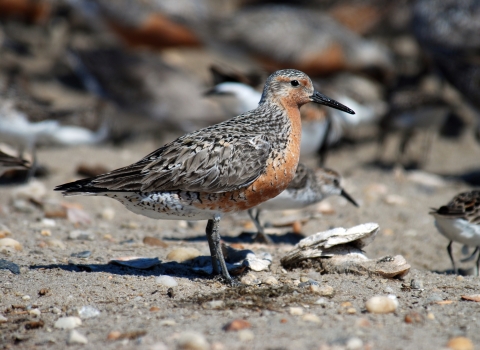The island night lizard (Xantusia riversiana ), found only on the Channel Islands off the coast of California, has reached a historic milestone. After 36 years of protection under the Endangered Species Act (ESA), the species has successfully recovered and will be removed from federal protection.
Island night lizards are small lizards, averaging just two to four inches in length from snout to vent. Their coloration varies from pale ash gray and beige to shades of brown and black, with varying uniform, mottled, and striped patterns. This species of lizard lives about 11 to 13 years, although some individuals have been estimated to be up to 30 years old.
Island night lizards are found only on three of the Channel Islands—San Clemente Island, San Nicolas Island, and Santa Barbara Island. A very small number of lizards are also found on Sutil Island, situated several thousand yards from Santa Barbara Island.
The island night lizard was first listed under the ESA in 1977 as a result of severe habitat degradation on the Channel Islands. These islands were severely impacted by ranching and grazing, in particular, the introduction of non-native herbivores, including goats and pigs on San Clemente and San Nicolas islands, and rabbits on Santa Barbara Island. These non-native animals stripped the land of vegetation and caused significant erosion. In addition, feral cats introduced to San Clemente and San Nicolas islands posed a predation threat to the lizard.
Two of the Channel Islands – San Clemente and San Nicolas – are administered by the U.S. Navy. Santa Barbara Island is managed by the National Park Service. Our partners at the U.S. Navy and National Park Service worked to remove these non-native species from the islands, and by the mid-1990s all goats, sheep, and rabbits were removed. Feral cats were successfully removed from San Nicolas Island in 2010, and while there are still cats remaining on San Clemente Island, they pose no significant risk to the survival of the island night lizard.
Today, there are 21.3 million lizards on San Clemente Island, 15,300 lizards on San Nicolas Island, and 17,600 lizards on Santa Barbara Island (including Sutil Island). The National Park Service and the U.S. Navy have established native plant nurseries and are actively cultivating native plants to further restore the habitat on these islands.
Thanks primarily to the work of our partners at the U.S. Navy and National Park Service to remove non-native species from the islands, protect habitat for the lizard, and promote the restoration of native plants that provide habitat for the lizard, the island night lizard is flourishing.




